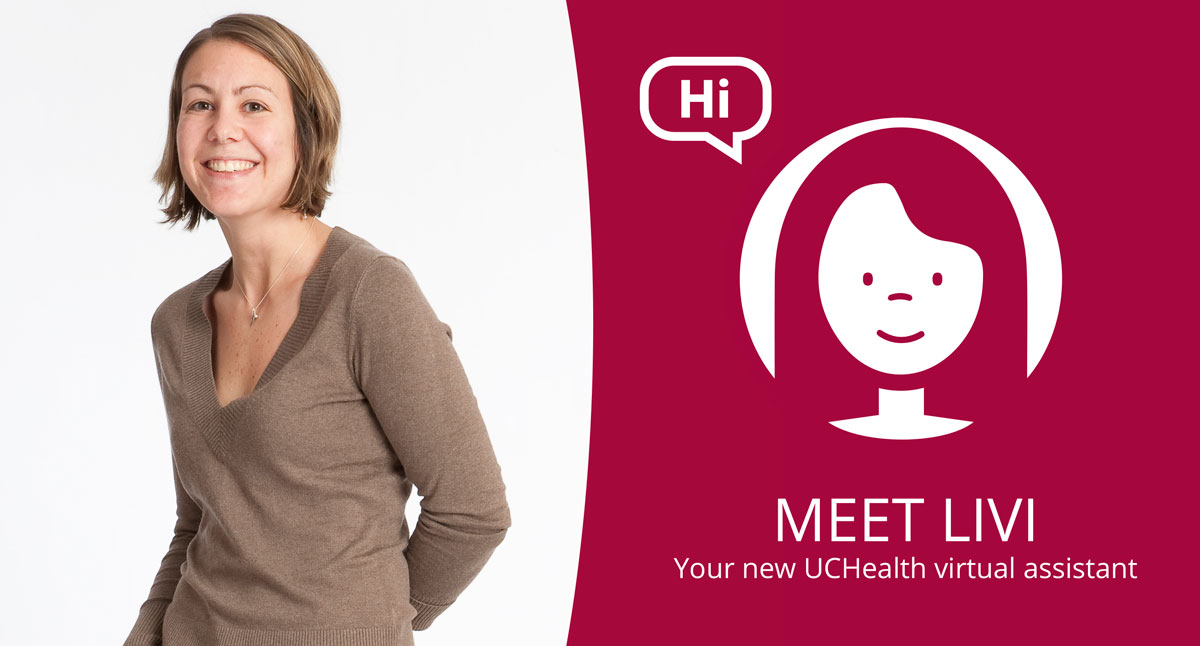
08 May A Conversation With UCHealth: Best Practices For Implementing Conversational AI
While many businesses know conversational AI will help them streamline work, better serve customers and free up employees for more engaging jobs there is still some uncertainty about what it takes to get started. As it turns out, the main things you need are curiosity and a vision for where you want to take your company. Avaamo client UCHealth launched their virtual assistant “Livi” early in 2019. Nicole Caputo, director of experience and innovation, talked to us about how they started with conversational AI and made it a success.
Why did you decide to get started with conversational AI?
It’s where every industry is headed. We strive to figure out how to meet patients where they are and deliver care in the best way possible. It’s ultimately about offering easier and quicker information, so patients can focus on the relationships that matter.
What are some things you considered before you implemented conversational AI?
We redesigned our website to make information easier to access. We are also consistently working to improve the usability and overall experience in our mobile app. Data insights drive our decisions and we will always listen to the voice of the consumer to make sure we’re pointed in the right direction.
What were some of the challenges?
Testing virtual assistants remains a challenge. What number of tests do you do before you go live? Should you have 300 or 400? There is honestly no replacement to getting it live and having people ask Livi thousands of questions. We needed to put her in a real environment and see what customers were asking. Doing that allowed us to determine what people want from a virtual assistant and make changes from there.
There are challenges around voice recognition and determining the differences between what people say and what they mean. There are also different ways to answer or interpret specific questions. For example, “tell me about breast cancer” could be an ask for general information or searching for a specific clinic, provider, or class. You need to monitor interactions on a daily (almost hourly) basis; the more questions, the more we learn and the smarter (Livi) gets.
How have you benefited?
Going through queries and seeing what people ask Livi has allowed us to better understand the needs of our patients and visitors. Jumping into conversational AI now allows us to learn more about what we need in order to deliver the best experience possible, and also prepares us to be more nimble as conversational AI technology changes and gets more sophisticated. Bottom line, investing now keeps us from playing catch up with patient expectations in the future.
Any tips to others on how to ease integration and communicate what’s coming to customers and employees?
Baby steps. That’s what we have done. Start by finding out what your customers want, add capabilities slowly and test vigorously along the way to validate that you’re delivering the right information and experience. Iterate and ask questions of stakeholders throughout the process. If you tackle it all at once you will get it wrong and have an uphill battle toward your end goal. Get the right team on board. Make sure they are creative, flexible, engaged and ready to problem solve. It should be fun, and at the end of the day, it’s all about delivering an experience that improves lives.
About UCHealth
UCHealth is a not-for-profit health care provider with a large network of nationally-recognized hospitals, clinics, and medical centers located throughout Colorado, southern Wyoming and western Nebraska. With a mission to improve lives in ways both big and small, UCHealth makes it easy for patients to connect with their healthcare providers and delivers a personalized patient experience through innovative, conversational AI technology.


